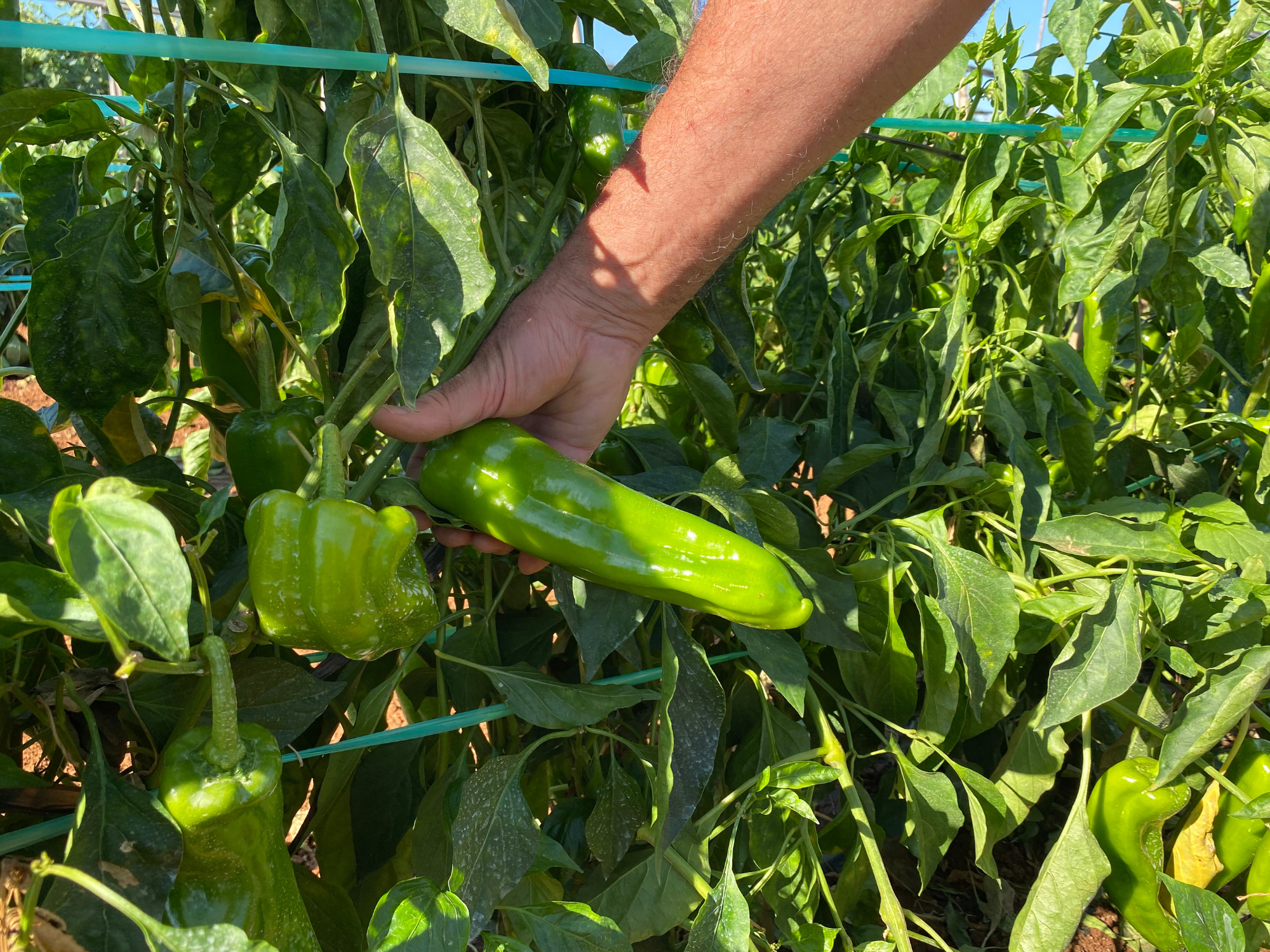It can be sweet or spicy and come in a variety of colors . It works well both raw and cooked, and whether in sauces, salads or stuffing, it is a great accompaniment in the kitchen. Also, and let me get out of my way, which is the earth, something that many people don't know is that peppers are high in vitamin C. That said... let's get back to farming!
Julio's crops look neat and radiant . The canes that support the plants are an extensive structure from which bushes and bushes hang . We walk through the aisles, looking at the peppers hanging and shining in the midday sun. Before Julio tells us about his crops, let's explore a little about the origin of the pepper.

Origin of the pepper
Although it often bears the term “Italian” next to its name, the pepper is also native to Latin America. It comes from the Peruvian and Bolivian Andes, although remains have been found in the area of present-day Mexico.
Also like the tomato and the potato , it is from the Solanaceae family and began its journey by ship to Europe once Columbus returned from America . It shares with the zucchini the fact of being one of the vegetables that were first domesticated by humans.
In turn, within the Solanaceae family, it belongs to the Capsicum genus and has three large groups: sweet table pepper, spicy table pepper and paprika varieties. Well, let's continue through Julio's field to learn more about its cultivation...

On growing peppers with Julio
If you are subscribed to the Campos del Abuelo newsletter, you will have already found out that we call the Italian peppers of July the traffic light of the garden . If you leave the peppers on the plant, they literally go through the three colors of the traffic light: green, yellow and red . This has nothing to do with the ripening points; if it is green it is in perfect condition to consume, just as if it goes from yellow to red.
The word Italian is used when referring to the pepper because it is one of the varieties of pepper, like the Lamuyo variety, which Julio grows in his garden. In the case of the Lamuyo peppers, in order for them to reach this red colour, they are left on the plant , but those that touch the ground are removed to prevent them from spoiling, since, as Julio tells us from his field: The mites present in the soil can affect them.
In the case of the Italian variety of pepper, it is generally consumed green, although some reach a red colour as well . Regarding the Italian, Julio tells us: It is planted in several phases and is available from June to November.
Julio takes one of the peppers from the plant in his hands and continues: This is a hybrid variety . We obtained it from local varieties that are very similar to the Italian pepper and let's say we ended up creating our own Italian pepper. This one from here stands out for having the finest flesh.
Look how good the peppers of Julio's hybrid variety look:

When we asked Julio about the process that the plants go through to produce peppers, he told us: In the first plantations, a small tunnel is placed to protect them . Then, plants with insects are introduced that help control the aphids.
Regarding the farmers' fight against aphids, in this article on how organic products are grown , Clara, also a fellow farmer from Campos del Abuelo, gives an excellent example with aphids and ladybirds.
But in addition to focusing on pests and how to combat them, the work is done on the plant itself: We also remove the shoots from the lower part of the plant so that it produces fruit as straight as possible at the top . If the lower shoots were left, the pepper would come out very crooked.
Julio also uses sulfur to combat fungus when growing peppers. As we always say at Campos del Abuelo, agriculture is not just about planting a seed and watering. It is a daily job that requires commitment .
At Campos del Abuelo, we work daily to ensure that Julio and other farmers can sell their farm products to consumers without intermediaries.

The visit to Julio's fields is over for now, but we will surely return later. His peppers are delicious and we hope you can get to try this season's ones. If not, of course, you will have to wait because the land is generous but everything takes time to bear fruit.
Remember that by visiting our online fruit and vegetable store you can customize your box as you wish and receive it at home in less than 24 hours. In addition, not only does everything arrive fresh from the field to your home, but our products are free of post-harvest chemicals and do not undergo any type of refrigeration.
Until next time and thanks for reading!




